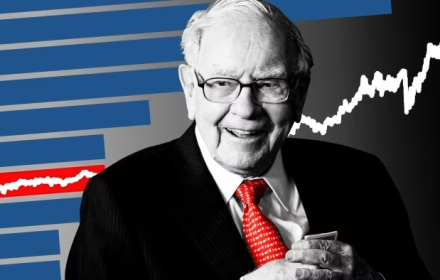Learn about key investment strategies
Master the basics of trading by learning how to analyse techniques
Master the principles of risk management while protecting your investments
Immerse yourself in methods to help you make decisions


Financial independence is not just a number in a bank account or a status in society. It is a state of internal and external stability where capital, income, and decisions are guided by strategy, not circumstances. Material independence is the ability to manage money in a way that time ceases to be a hostage to …

Warren Buffett’s investment philosophy, embodied in Berkshire Hathaway’s activities, represents the epitome of fundamental analysis and strategic patience. This approach goes beyond speculative deals, focusing on mastering the principles of Value Investing and long-term asset ownership. In the conditions of permanent market volatility, where short-term noise dominates over facts, Buffett’s system offers a clear, decades-tested …

The first steps in investments are like moving in the fog: there are many assets, thousands of platforms, and even more pieces of advice. But without a clear destination, even the most profitable strategy loses its meaning. In order for capital to move in the right direction, it is necessary to precisely define the financial …

Investing is no longer just for Wall Street professionals. Over the past 20 years, the stock market has grown almost fourfold, and access to capital accumulation tools has become widespread. The best investment books open the door to understanding how wealth grows, how strategies are formed, and how decision-making psychology works in risky conditions. Each …

The financial market offers dozens of directions, but the choice can be intimidating due to the abundance of terms and complex instruments. The question of how to invest for a beginner turns into a task with multiple variables: profitability, risk, liquidity, taxes, broker commissions. A proper start helps avoid mistakes and preserve capital. Initial Understanding: …

The modern financial market offers a huge range of opportunities, but only a few achieve exceptional results. To understand how to achieve stable capital growth, it is worth studying the strategies of the most successful investors, who not only created wealth but also shaped the principles of long-term investment discipline. Buffett, Graham, Lynch, Icahn, Bogle, …
Investing and trading online opens up opportunities for everyone, regardless of experience level. You can start small


Online platforms provide access to a wide range of financial instruments from stocks and bonds to cryptocurrencies and ETFs
You can manage your investments anytime and from anywhere through mobile apps and web platforms


Many online platforms offer extensive educational materials, webinars and analytical tools
Finding opportunities in investing and trading involves actively analysing the market, studying financial instruments, assessing one's own strategies and risks, developing trading plans and strategies, and participating in trading sessions and negotiations with partners or clients. To invest and grow successfully in this field, it is important to be flexible, adaptive and able to analyse data and make decisions effectively
